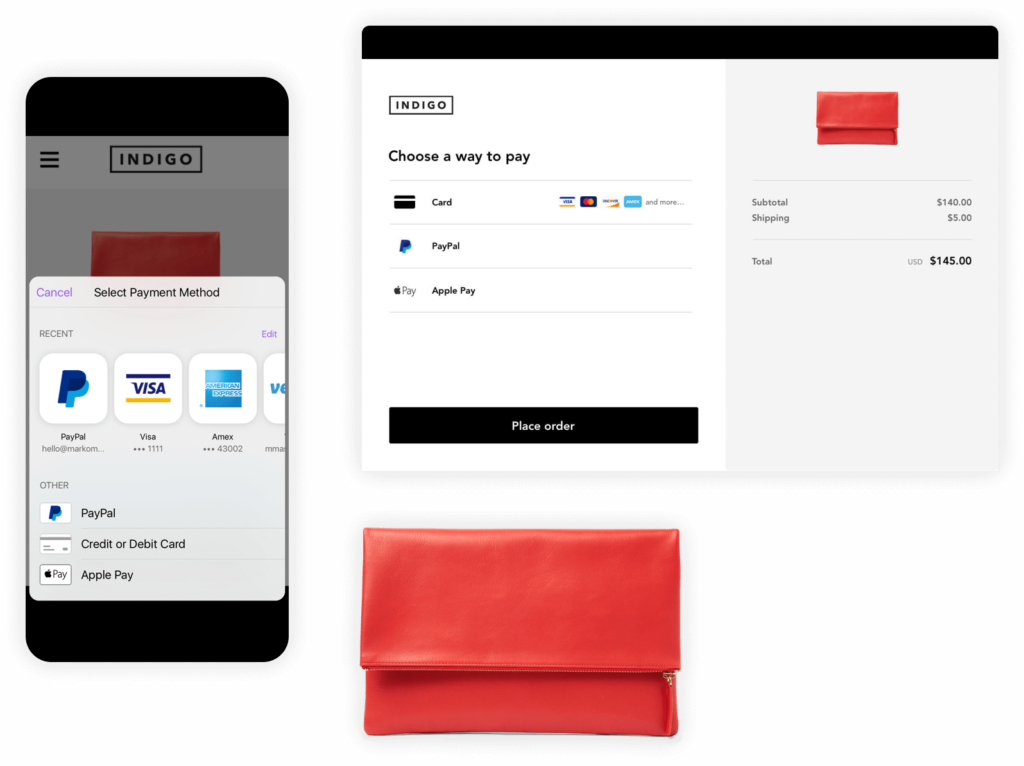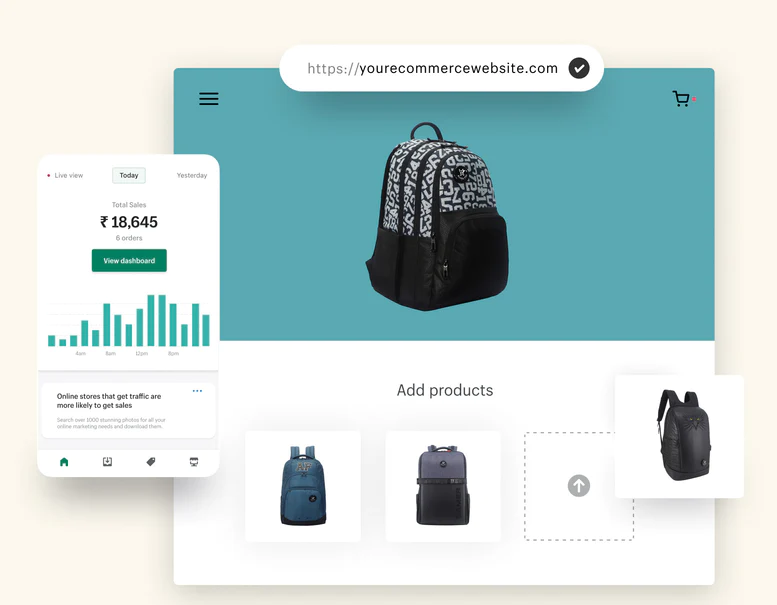Digital products like online courses, ebooks, and insightful reports are powerful sources of revenue generation. The online learning market is worth a whopping $11.3 billion – and that figure is expected to jump to $375 billion by 2026.
Whether you’ve already started creating your own digital products or you’re looking to generate more revenue by selling information products online, you need to find the right platform and payment gateway for your needs.
Choosing a reliable and secure payment gateway is essential to make sure your customers can purchase your digital products easily and securely with minimal friction.
Here are the best payment gateway for digital products right now – including pros, cons, and pricing for every platform.
Skip ahead:
- Top payment gateways for selling digital products
- What is a payment gateway?
- Best payment gateways for selling digital products
- 5 alternative payment gateways for selling digital products
- 5 top tips to choose the best payment gateway
- Ready to find your ideal payment gateway?
Top payment gateways for selling digital products
| Payment gateway | Pros | Cons | Pricing |
| PayPal |
|
|
|
| Stripe |
|
|
|
| Braintree |
|
|
|
| Helcim |
|
|
|
| Amazon Pay |
|
|
|
| Shopify Payments |
|
|
|
| Thinkific payments |
|
|
|
What is a payment gateway?
A payment gateway is a type of front-end technology used by merchants to accept payments from customers. Payment gateways can include physical card-reading devices – like the ones found in your local coffee shop – and online payment processing portals like PayPal and Stripe.
Payment gateways collect customer card information and encrypt it for later processing by a payment processor.
If you’re going to be selling digital products, you need to have a payment gateway to let you accept payments from your customers.
Best payment gateways for selling digital products
PayPal vs Stripe
PayPal and Stripe are two of the most popular payment gateways right now.
Both payment gateways use high-grade data encryption and are Payment Card Industry Data Security Standard (PCI-DSS) compliant so you know that your transactions and data are safe.
PayPal and Stripe have both developed a simple, streamlined user interface that makes them easy to navigate for your customers and increases conversions. They’re also international products, accepting payments from over 200 countries worldwide – so they’re an ideal choice for Creator Educators with a global audience.
These payment gateways allow you to process one-time payments or set up subscriptions, while ensuring that your customers’ data is protected – ideal for businesses with a recurring revenue model like membership sites and online courses.
PayPal is the payment gateway leader
PayPal has over 400 million active users across the world. It’s secure, scalable, and streamlined, making it an ideal choice for selling your digital products – 69% of users felt more confident shopping on a website that accepts PayPal.
PayPal research also shows a 28% increase in checkout conversions when businesses use PayPal – and 19% increase in unplanned purchases when PayPal is an option at checkout.
Here are some more key benefits of PayPal:
- Secure payment processing
- Supports 25 currencies
- Good invoicing features
- Easy to integrate into other platforms
- Instant fund access
- Mobile-first payment gateway
PayPal also equips sellers with powerful conversion tools. With multi-channel payment options, it gives you the chance to sell your digital products across a wide range of devices and platforms.
While PayPal has a wide range of benefits, there are also some key drawbacks including:
- Complex transaction fee structure
- Popular target for phishing and scams
- Poor customer service
Stripe is a close competitor
Stripe takes second place as the most used payment gateway globally. With over 1.14 million websites currently using Stripe across 47 countries, Stripe has a fast-growing reputation as a top payment gateway for selling digital products.
Here are some top benefits of Stripe:
- Supports more than 135 currencies
- Flat rate, transparent pricing
- Fully customizable checkout flow
- Advanced technologies to protect customers from fraud
- Deposits payments directly into your account
- Easy to use and set up
Stripe is reasonably priced when compared with other payment processors – you also don’t need to pay anything extra to set up or cancel your account. But there are some drawbacks.
Here are the downsides to using this payment gateway:
- Difficult to integrate
- Need help of a developer to customize or add new features
- Limited functionality for in-person transactions
PayPal vs Stripe comparison table
| Features | PayPal | Stripe |
| Fees within the US | 2.9% + $0.30 per transaction | 2.9% + $0.30 per transaction |
| Fees within Canada | 2.9% + 0.30 CAD per transaction | 2.9% + $0.30 per transaction |
| Fees in all other countries | 4.4% and more depending on the country | 2.9% + $0.30 per transaction |
| Supported number of countries | More than 200 | 46 |
| Supported currencies | 25 | More than 135 |
| Dedicated support | Yes | Yes |
| Embedded checkout | Yes | No |
5 alternative payment gateways for selling digital products
While PayPal and Stripe are the best-known payment gateways right now, there are also many more alternatives you can use to sell your digital products. Here are the top 5 alternatives – including platforms built specially for selling digital products.

Supporting over 130 local currencies in 44 countries, Braintree is a top choice for Creator Educators with a global audience. As an offshoot of PayPal, Braintree has many of the features that users know and love from PayPal – but it’s tailor-made for eCommerce businesses.
The key benefits of using Braintree is the transparent pricing structure and the no-contract obligation, so you can use the product month-to-month as you need it.
Pros
- Transparent, flat rate pricing
- No long-term signup
- Integrations with PayPal, Venmo, credit and debit cards, and digital wallets like Apple Pay
Cons
- Poor customer support
- Complex interface
- Transaction fees not returned for refunds
Pricing & Fees
- Cards and digital wallets: 2.59% + $0.49 per transaction
- Venmo: 3.49% + $0.49 per transaction
- ACH Direct Debit: 0.75% per transaction
- Additional fees: 1% for transactions in any non-USD currency, 1% for transactions when customer’s card is issued outside of the United States.

Designed for businesses with both digital products and brick-and-mortar stores, Helcim is a merchant services provider with an all-inclusive platform for invoicing, payment processing, and online checkouts.
Helcim prides itself on transparency – they aim to be an alternative to other payment gateways known for their hidden fees, rigid contracts and poor customer service. Helcim lets users close their account any time and all deposits will be in your bank account within 2 days of the sale.
Pros
- All-in-one platform including payment gateways, invoicing, and point-of-sale (POS) software
- Transparent pricing structure
- Payment gateway API easy to integrate with third-party software
Cons
- Interchange-plus pricing harder to predict
- Higher fees than other platforms
- Need at least $25,000 monthly sales to get best rates
Pricing & Fees
- Less than $25,000 in monthly card transactions: Interchange plus 0.50% + $0.25 per online transaction
- Fee reduces by 5% as your monthly credit card volume increases
- ACH/EFT payments: 0.5% + $0.25

Chances are, most of the people buying your digital products will already have an Amazon account – and they’ll have their payment information loaded up and ready to go. Amazon Pay makes your checkout process seamless and extra fast by letting customers use their Amazon account information to make a purchase. Amazon Pay is tailored to online sales and it also supports global customers and a wide range of currencies.
Pros
- Easy for customers with existing Amazon accounts
- Supports multiple currencies
- No setup or monthly subscription fees
Cons
- Need an Amazon Seller account
- Delayed payouts
- Doesn’t offer volume discounts
Pricing & Fees
- Web and mobile: 2.9% + $.30 per transaction
- Alexa: 4% + $.30 per transaction
- Extra 1% for cross-border transactions

Specializing in eCommerce, Shopify is a great option for selling digital products online. Shopify Payments is an integrated payment gateway that lets you start accepting payments immediately, with minimal set-up. This service is included in all of Shopify’s paid subscription plans – and the payment processing rates are competitive.
This platform comes with a wide range of out-the-box themes and templates to help you set up a slick and professional digital store in no time. Shopify websites load fast and have lower cart abandonment rates than other platforms – and if you have any problems, Shopify offers 24/7 customer support.
Pros
- Easy to set up and use basic features
- Flexible, customizable checkout
- Customers can pay through any channel – including social media
Cons
- High fees for eCommerce plans
- Fee for using third-party payment gateways
- Difficult to set up integrations for first-time users
Pricing & Fees
- Starter: $5 per month, 5% per online transaction
- Basic: $39 per month, 2.9% + $0.30 USD per online transaction, 2.7% per in person transaction
- Advanced: $399 per month, 2.4% + $0.30 USD per online transaction, 2.4% per in person transaction
Tailor-made for Creator Educators looking to sell digital products, Thinkific is a one-stop-shop for creating, marketing, publishing, and selling your products online. Thinkific Payments is a built-in payment processor that lets you accept payments, manage payouts, and process refunds all from your Thinkific dashboard – so you don’t need to switch apps or download anything.
Boost conversions with the Thinkific Payments optimized Performance Checkout and set up a range of payment options for your customers, including Buy Now, Pay Later (BNPL) and digital wallets. Thinkific Payments also offers a wide variety of transaction options so you can easily set up subscriptions, payment plans, and one-time payments.
Pros
- Manage payments directly from Thinkific dashboard
- Variety of payment options – including subscriptions and one-time payments
- Automatically migrate subscriptions, plans and billing cycles from Stripe
Cons
- Currently available in USA, Canada, UK and limited release in other countries
- Takes 24-48 hours to verify account details after sign-up
- Changes sent to Site Owner/Site Admins for review
Pricing & Fees
- Free: $0 per month
- Basic: $36 per month
- Start: $74 per month
- Grow: $149 per month
- Expand: $374 per month
- Credit card processing fee: 2.9% + $0.30 per transaction
Sell digital products with Thinkific for free
From online courses to communities, Thinkific’s free plan has everything you need to start selling digital products.
5 top tips to choose the best payment gateway
To keep your business running smoothly, it’s essential to choose a payment gateway that’s safe, secure and easy to use. Here are 5 key criteria to keep in mind:
Compliance
Payment gateways are regulated by financial authorities to make sure that customer data is protected. Most government authorities require payment gateways to comply with Payment Card Industry Data Security Standard (PCI-DSS). This ensures that card transactions are secure and that cardholders’ data is at lower risk of being stolen.
If you collect health-related data while selling digital products, you may also have to choose a payment gateway that complies with the Health Insurance Portability and Accountability Act (HIPAA). If you’re accepting payments from European Union residents, you may also have to choose a payment gateway that is General Data Protection Regulation (GDPR) compliant.
Compliance is an essential factor in choosing a payment gateway – this aspect is a non-negotiable to keep your customer data safe.
Security
Data theft is a very real threat in the world of online payments – and that’s true for all businesses from multiple-billion dollar organizations to small startups.
To limit security risks, the payment gateway you choose needs to support data encryption. Some payment gateways conceal card information to protect users’ data with a process called tokenization. It’s important to ensure that your payment gateway supports data encryption and tokenization for uncompromised security – to give you and your customers peace of mind.
Compatibility
The payment gateway you choose should also be compatible with various network processors. The major network processors include American Express, MasterCard, Visa, Diner’s Club, and Discover.
Network processors offer credit and debit cards that are co-branded with issuing banks. The more networks your payment gateway supports, the easier it is for customers to purchase your digital products. But at a minimum, you need to make sure your chosen payment gateway supports Visa and MasterCard.
Usability
There are tons of payment gateways that contain all the features you need – but not all of them can be integrated into the sites you’re using to sell digital products. If you have to add extra steps to your checkout process, this could cause customers to lose interest and abandon their carts. To deliver a seamless checkout experience – with minimum friction – choose a gateway that easily integrates with your sales platform.
Universality
The beauty of selling digital products is that you can sell to anyone anywhere in the world. Don’t limit yourself to just serving customers in your current location. Although the US and the EU account for 85% of the market share of online courses, with translation tools like text-to-speech software you can sell to a wider range of customers than ever before.
Choose a payment gateway that supports multiple currencies, complies with financial regulations across borders, and offers multilingual support to users.
Ready to find your ideal payment gateway?
PayPal and Stripe are ideal payment gateways for Creator Educators selling digital products online. They’re effective at helping you to generate sales, keep customer data safe, and ensure you get paid on time without any hurdles. Compared to other payment gateways on the market, PayPal and Stripe are also the most widely accepted options for global users and they support a wide range of currencies.
Thinkific integrates with both PayPal and Stripe, as well as having an optimized checkout process that’s designed to boost conversions for digital products. Thinkific makes it easy to set up both one-time payments and recurring revenue streams that run and run. All payments are directly transferred to your account, so you can set up your products, sit back and watch the money roll in.
Sell digital products with Thinkific for free
From online courses to communities, Thinkific’s free plan has everything you need to start selling digital products.
This blog was originally published in February 2022. It has since been updated in August 2023 to include the most relevant information.



